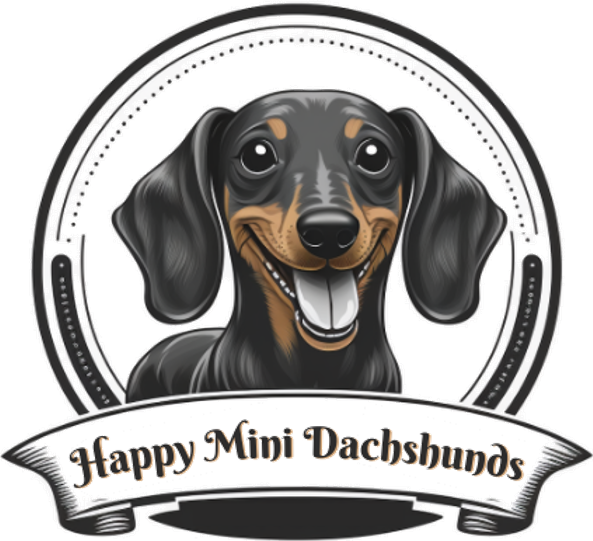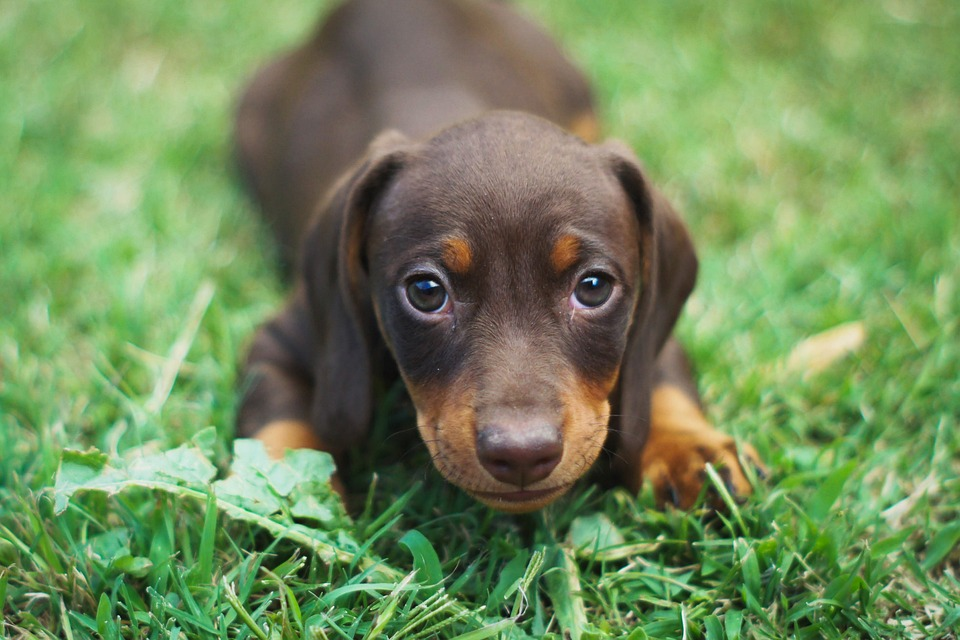Potty training a mini dachshund can be a challenging task, but it is an essential part of owning a dog. A properly trained mini dachshund can save you time, effort, and money in the long run. Not to mention, it can also lead to a stronger bond between you and your furry friend.
The importance of potty training your mini dachshund cannot be overstated. Not only will it prevent accidents in your home, but it will also ensure that your mini dachshund knows where and when to go potty. Additionally, it is crucial for your mini dachshund’s overall health and well-being.
Key Takeaways:
- Understand your mini dachshund’s potty habits and prepare for training
- Learn basic and advanced training techniques, from crate training to scent training
- Troubleshoot common potty training problems and maintain success with consistency and rewards.
Understanding your mini dachshund’s potty habits
Before you begin potty training your mini dachshund, it is essential to understand their potty habits. Typically, mini dachshunds need to go potty every 2-4 hours, depending on their age, diet, and activity level. Additionally, mini dachshunds tend to need to go potty after they wake up, after they eat, and after they play.
It is also important to be aware of signs that your mini dachshund needs to go potty. These signs can include whining, scratching at the door, circling, and sniffing around.
Common potty problems to watch out for include submissive urination, excitement urination, and marking behavior. Submissive urination occurs when your mini dachshund feels intimidated, whereas excitement urination can happen when your mini dachshund is overjoyed. Marking behavior is when your mini dachshund urinates to mark their territory.
Preparing for potty training
Before you begin potty training, it is important to gather the necessary supplies. These supplies may include a crate, leash, puppy pads, cleaning supplies, and treats for positive reinforcement. Once you have gathered your supplies, you should set up a designated potty area in your home or yard. This area should be consistent throughout the training process, and your mini dachshund should be encouraged to go potty in this area.
Establishing a potty routine is also essential for successful potty training. By taking your mini dachshund out at regular intervals and sticking to a routine, they will learn when and where to go potty.
Additionally, it’s important to ensure that your mini dachshund has a regular feeding schedule to establish a consistent bathroom routine. Avoid leaving food out all day and instead, feed your dog at specific times throughout the day. This will make it easier to predict when they will need to go potty and avoid accidents in the house.
When setting up a designated potty area, choose an easily accessible spot that is away from their feeding and sleeping areas. You can use a puppy pen or baby gate to create a small area that your mini dachshund can access easily. Cover the area with puppy pads to make clean-up easier, and gradually decrease the size of the area as your dog becomes more comfortable with going potty in that location.
Establishing a potty routine involves taking your mini dachshund outside to their designated potty area at regular intervals throughout the day. In general, puppies may need to go potty as often as every 30 minutes to an hour, while adult dogs can typically go for longer periods of time. Take your mini dachshund outside after they wake up, after meals, and after playtime to give them the opportunity to go potty.
Consistency is key when it comes to potty training. Stick to a routine and be patient with your mini dachshund as they learn. Remember to reward them with treats and praise when they go potty in the designated area to reinforce positive behavior. With time and patience, your mini dachshund will become potty trained and you will both enjoy the benefits of a cleaner and happier home.
Basic potty training techniques
When it comes to potty training your mini dachshund, there are several basic techniques that you can use. These techniques are simple yet effective and can help your mini dachshund learn to potty in the right place.
Crate training is one of the most popular techniques for potty training your mini dachshund. The idea behind crate training is to confine your mini dachshund to a crate when they are unsupervised. This helps to prevent accidents from occurring while you are away or unable to supervise your dog. When you take your mini dachshund out of the crate, it is important to immediately take them to their designated potty area. This helps to reinforce the idea that this is the place where they should go potty.
Positive reinforcement training is another effective potty training technique. This involves rewarding your mini dachshund with treats or praise when they go potty in their designated area. This helps to reinforce the idea that going potty in the designated area is a good thing. Using a leash for outdoor potty training can also be helpful, as it allows you to guide your mini dachshund to the designated area. By using a leash, you can ensure that your mini dachshund goes potty in the right place and reinforce good potty habits.
Housebreaking with puppy pads is a technique that can be useful for indoor potty training. Puppy pads are absorbent pads that are designed to soak up urine and can be used to train your mini dachshund to go potty in a designated area. Simply place the puppy pads in the designated area and encourage your mini dachshund to use them. Over time, your mini dachshund will learn that this is the place where they should go potty.
Overall, these basic potty training techniques can be highly effective in teaching your mini dachshund where to go potty. It is important to remember that consistency and patience are key when it comes to potty training, and that positive reinforcement is always the best approach. With time and persistence, your mini dachshund will learn to potty in the right place and you’ll both benefit from a cleaner, more comfortable living space.
Related: How to Get Mini Dachshund to Stop Biting?
Advanced potty training techniques
If you have already tried the basic potty training techniques and your mini dachshund is still having accidents or struggling to grasp the concept, advanced potty training techniques may be the solution. These techniques require a bit more time and effort, but can be effective in achieving long-term potty training success.
Bell training is a popular method that involves hanging a bell near the designated potty area and encouraging your mini dachshund to ring it before going potty. This technique helps your dog associate the sound of the bell with the need to go potty, and can eventually lead to your mini dachshund ringing the bell to signal their need to go outside. To start bell training, hang a bell on a string near the door you usually take your dog out. Whenever you take your dog out, ring the bell and say “go potty.” Eventually, your dog will associate the sound of the bell with going outside to potty. When your dog rings the bell on their own, immediately take them outside to the designated potty area.
Clicker training is another advanced potty training technique that involves using a clicker to signal when your mini dachshund has successfully gone potty in the designated area. Clicker training helps your dog understand exactly what behavior you want them to repeat, and reinforces the positive behavior. To start clicker training, first, introduce the clicker to your mini dachshund by clicking it and giving them a treat. Once they have associated the click with a treat, take them to the designated potty area and wait for them to go potty. As soon as they finish going potty, click the clicker and give them a treat. Repeat this process consistently, and your mini dachshund will soon understand that the clicker sound means they have done something good.
Scent training involves placing a small amount of your mini dachshund’s urine or feces in the designated potty area to encourage them to go potty there. The smell of their own urine or feces can signal to your mini dachshund that the area is safe and appropriate for potty time. Start by taking your mini dachshund to the designated potty area and letting them go potty. Once they have finished, collect a small amount of their urine or feces in a plastic bag or container, and place it in the designated potty area. Take your mini dachshund back to the area regularly, and they should eventually start to associate the scent with the need to go potty.
It is important to remember that all dogs are different, and what works for one may not work for another. Advanced potty training techniques require patience and consistency, but with time and effort, your mini dachshund can become fully potty trained.
Troubleshooting potty training problems
Accidents in the house are inevitable during the potty training process. However, it is important to address the issue promptly and effectively to prevent it from becoming a habit. When accidents occur, it is crucial to clean up the area immediately using an enzymatic cleaner that eliminates the odor completely. This will prevent the dog from returning to the same spot to eliminate again.
Marking behavior is a common problem among male dogs, and it involves them urinating on objects to mark their territory. To prevent this behavior, it is essential to get your mini dachshund neutered. Neutering can significantly reduce or eliminate marking behavior in male dogs. Additionally, limit your dog’s access to certain areas of the house and provide plenty of opportunities for outdoor potty breaks.
Separation anxiety is another problem that can affect potty training. Mini dachshunds are known for their attachment to their owners and may exhibit destructive behavior or eliminate indoors when left alone for extended periods. To address separation anxiety, gradually increase the amount of time your dog spends alone, provide plenty of toys and distractions, and make sure your dog is comfortable in their crate or designated area.
Maintaining potty training success
Consistency and patience are key to maintaining your mini dachshund’s potty training success. Continue to reinforce good behavior by rewarding your dog with treats, praise, and playtime. As your dog becomes more reliable with their potty habits, gradually decrease the frequency of rewards.
When traveling with your mini dachshund, it is important to maintain their potty training routine. Bring along the necessary supplies, including a portable potty area and plenty of bags for waste disposal. Stick to your dog’s regular feeding and potty schedule as much as possible, and provide plenty of opportunities for outdoor potty breaks.
Conclusion
Potty training a mini dachshund can be a challenging process, but with consistency, patience, and the right techniques, it is possible to achieve success. Understanding your dog’s potty habits, preparing for potty training, and using positive reinforcement techniques can make the process smoother and more effective. With proper training and maintenance, you can enjoy a happy, healthy, and well-trained mini dachshund. Celebrate your dog’s success, and enjoy your life together!

